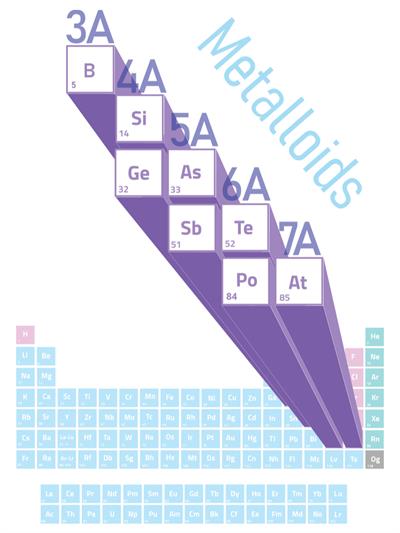PDF chapter test TRY NOW
Metalloids:
Elements that have the properties of both metals and non-metals are called metalloids.

Example:
Boron, arsenic, silicon, selenium, antimony, germanium, etc.
Alloys:

People in \(3500\) BC (BCE) used a metal alloy known as "bronze." However, the concept of creating an alloy was not new. Alloys make up the vast majority of metallic materials used today.
Alloys are two or more metals mixtures that are created by thoroughly mixing molten metals.
Non-metals are rarely combined with metals to create alloys.
Non-metals are rarely combined with metals to create alloys.
Alloying usually results in the formation of a metallic substance with more valuable properties than the original pure metals from which it is made.
Example:
The alloy brass is produced from copper and zinc.
Benefits of Alloys:
- Alloys do not corrode or just corrode to a minor degree.
- They are more rigid and more potent than pure metals (gold mixed with copper is tougher than pure gold).
- They have lower conductance than pure metals (for example, copper conducts heat and electricity well, while brass and bronze do not).
- Some alloys have lower melting points than pure metals (for example, solder is an alloy of lead and tin with a lower melting point than each metal separately).
- When a metal is alloyed with mercury, the result is known as amalgam.
